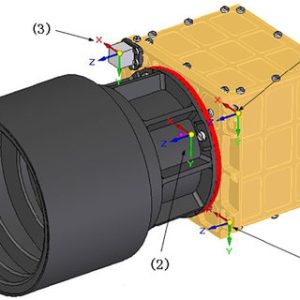Star sensor failure is a critical issue that can compromise the success of space missions, making it essential to understand its causes and implement effective mitigation strategies. Star sensors, which are vital for the precise attitude determination of spacecraft, can encounter various issues that affect their performance. This article delves into the common causes of star sensor failure, its impact on space missions, and the measures that can be taken to prevent and address these failures.

Star sensor failure can result from multiple factors, each affecting the sensor’s ability to accurately determine the spacecraft’s orientation. Environmental conditions in space, such as extreme temperatures, radiation, and micrometeoroid impacts, can damage the star sensor’s components. Prolonged exposure to high levels of radiation, for example, can degrade the sensor’s electronic systems, leading to malfunction or failure.
Another cause is hardware malfunctions, which can stem from manufacturing defects or wear and tear over time. Mechanical issues, such as misalignment of optical elements or failure of the sensor’s moving parts, can impede its functionality. Additionally, software glitches and algorithmic errors in the sensor’s data processing can lead to incorrect attitude determination or sensor shutdown.
The impact of star sensor failure on space missions can be significant, affecting various aspects of the mission’s objectives and operations. Accurate attitude determination is crucial for maintaining the correct orientation of the spacecraft. Without a functioning star sensor, tasks such as pointing scientific instruments, navigating through space, and maintaining communication links become challenging.
For Earth observation satellites, star sensor failure can result in blurred or misaligned images, compromising the quality of the collected data. In scientific missions, the inability to accurately point telescopes or instruments can lead to missed opportunities for observation and data collection. Communication satellites rely on precise orientation to maintain stable links with ground stations, and star sensor failure can disrupt these links, leading to data loss or delays.
To mitigate the risk of star sensor failure, several strategies can be implemented. Redundancy is a common approach, where multiple star sensors are installed on the spacecraft. This ensures that if one sensor fails, others can take over its functions, maintaining the spacecraft’s attitude determination capabilities. Designing star sensors with radiation-hardened components can also enhance their resilience to the harsh space environment.
Regular maintenance and calibration are crucial for ensuring the continued accuracy and reliability of star sensors. Pre-launch testing and in-orbit diagnostics can help identify potential issues early, allowing for timely repairs or adjustments. Additionally, developing robust software algorithms that can detect and correct data anomalies can improve the sensor’s performance and reduce the likelihood of failure.
The field of star sensor technology is continually evolving, with innovations aimed at enhancing their reliability and performance. Miniaturization of components and the use of advanced materials can make star sensors more robust and less susceptible to environmental damage. Artificial intelligence and machine learning algorithms are being explored to improve the accuracy and fault tolerance of star sensors, allowing them to adapt to changing conditions and correct errors autonomously.
Future star sensors may also incorporate self-healing materials that can repair minor damages caused by micrometeoroids or radiation exposure. These advancements will contribute to more resilient and reliable star sensors, reducing the risk of failure and ensuring the success of space missions.
In conclusion, understanding the causes and impacts of star sensor failure is crucial for developing effective mitigation strategies. By incorporating redundancy, using advanced materials, and leveraging innovative technologies, the risk of star sensor failure can be minimized, ensuring the success and reliability of space missions. As we continue to explore the cosmos, the importance of robust star sensor technology cannot be overstated.
Send us a message,we will answer your email shortly!